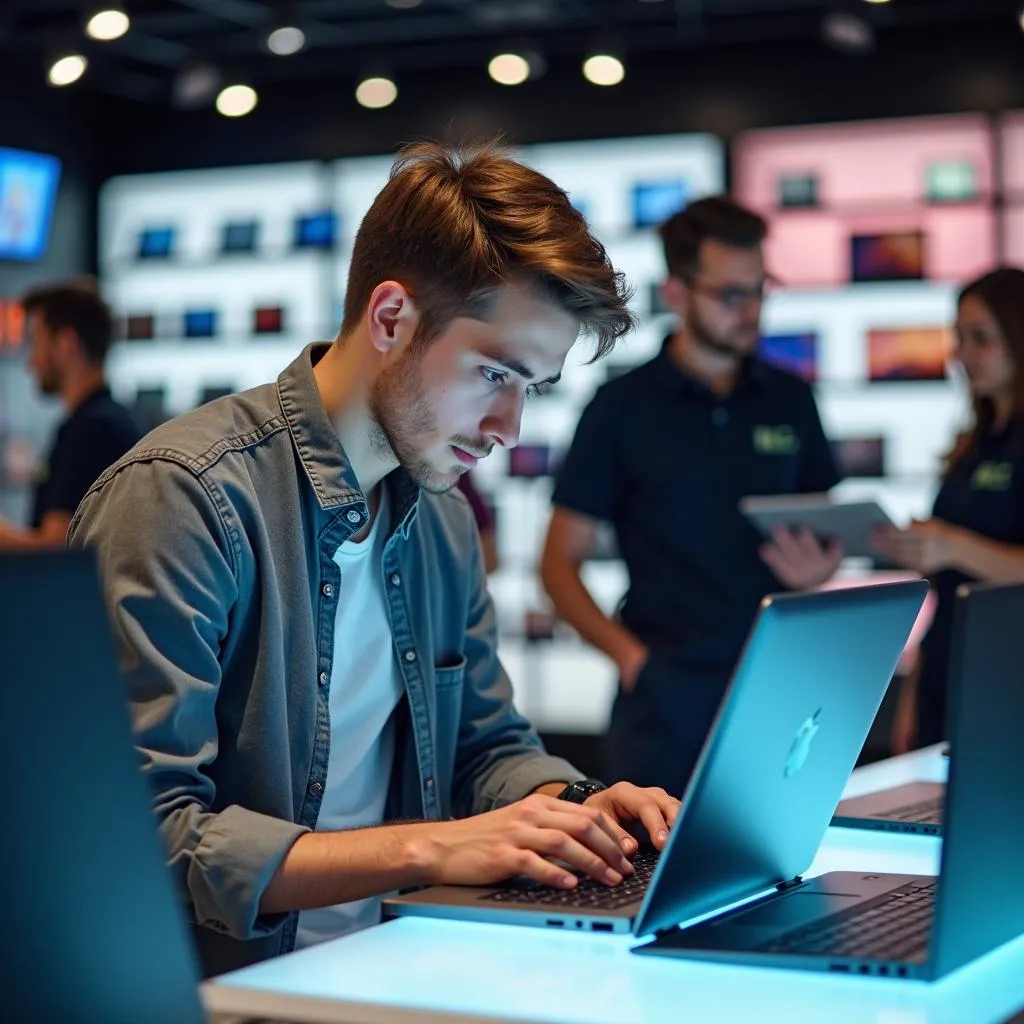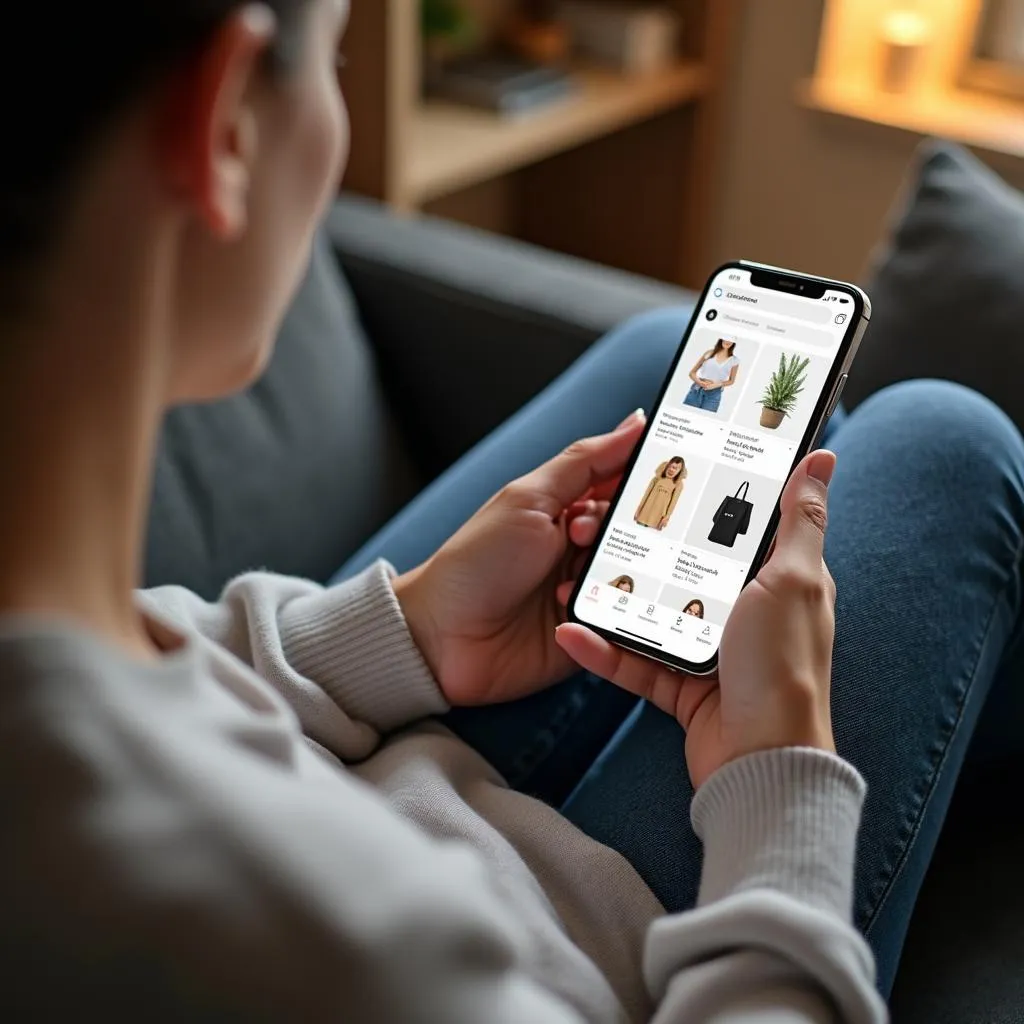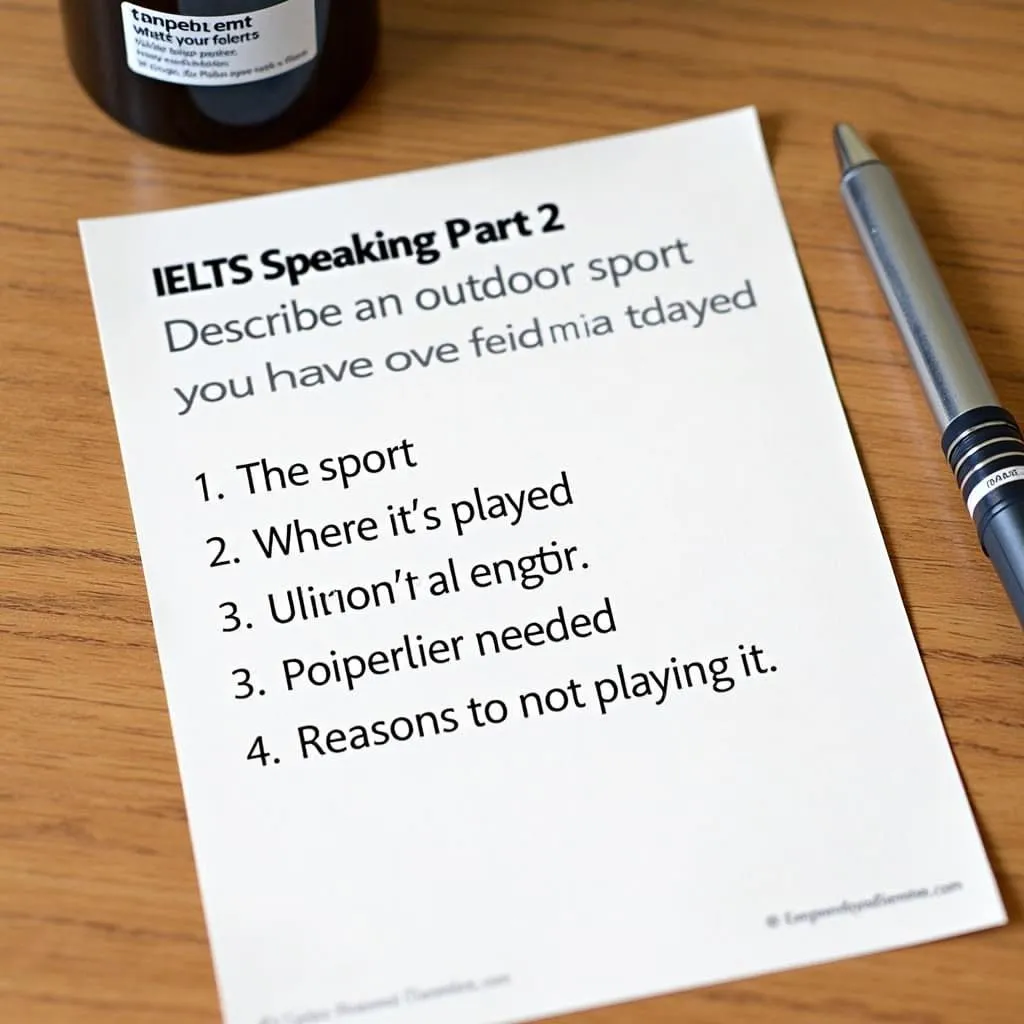Shopping is a common topic in IELTS Speaking tests, particularly when candidates are asked to describe a recent experience. This theme has appeared frequently in past exams and is likely to remain relevant in future tests. Let’s explore how to effectively answer questions related to a recent shopping experience, with sample responses for different band scores.
Nội dung bài viết
Part 1: Introduction and Interview
In this section, the examiner may ask general questions about shopping. Here are some common questions and a sample answer:
- Do you enjoy shopping?
- How often do you go shopping?
- What was the last thing you bought?
Let’s focus on the third question:
Examiner: What was the last thing you bought?
Sample Answer (Band 7-8):
“The last item I purchased was actually a smartwatch. I’ve been eyeing one for a while, and I finally took the plunge last weekend. I did my research thoroughly before buying it, comparing different brands and models online. In the end, I opted for a model that struck a balance between functionality and price. It’s been quite handy so far, especially for tracking my fitness goals and receiving notifications without constantly checking my phone.”
Part 2: Long Turn
Here’s a cue card related to the topic:
Describe a recent shopping experience you had
You should say:
- What you bought
- Where you bought it
- Why you decided to buy it
- And explain how you felt about this shopping experience
Sample Answer (Band 8-9):
“I’d like to share a recent shopping experience I had when I purchased a new laptop. This took place about a month ago at a well-known electronics store in the city center.
I decided to invest in a new laptop because my old one was showing signs of wear and tear, and its performance was significantly declining. As a freelance graphic designer, having a reliable and powerful computer is crucial for my work.
Before making the purchase, I conducted extensive research online, reading reviews and comparing specifications of various models. I narrowed down my options to a few high-performance laptops suitable for graphic design work.
When I arrived at the store, I was pleasantly surprised by the knowledgeable staff. The salesperson I spoke with was extremely helpful and patiently answered all my questions about the different models. He even demonstrated some key features that were particularly relevant to my work.
After carefully considering my options, I chose a laptop that exceeded my expectations in terms of processing power and graphics capabilities. The price was slightly higher than I had initially budgeted, but I felt it was justified given the laptop’s specifications and the positive reviews it had received.
The entire shopping experience was remarkably smooth and efficient. I appreciated the combination of online research and in-store expertise, which allowed me to make an informed decision. The store also offered a comprehensive warranty and a 30-day return policy, which gave me additional peace of mind.
Overall, I felt extremely satisfied with this shopping experience. It was time well spent, and I left the store feeling confident that I had made the right choice for my professional needs. The new laptop has indeed lived up to my expectations and has significantly enhanced my productivity.”
 Customer examining laptops in an electronics store
Customer examining laptops in an electronics store
Follow-up Questions:
- How did you feel about the price of the laptop?
- Did you encounter any challenges during this shopping experience?
Sample Answers (Band 8-9):
-
“While the price was admittedly higher than I had initially planned, I felt it was a worthwhile investment. The laptop’s superior specifications and the positive reviews it had garnered justified the cost. Moreover, considering the crucial role it plays in my work as a graphic designer, I believe the enhanced productivity and efficiency it offers will more than compensate for the additional expense in the long run.”
-
“Fortunately, the experience was largely smooth sailing. However, I did face a minor dilemma when choosing between two models with similar specifications but different brands. To overcome this, I relied on the salesperson’s expert advice and some quick online research on my phone to compare user reviews. This slight challenge actually made the experience more engaging and ensured that I made a well-informed decision.”
Part 3: Two-way Discussion
In this section, the examiner might ask more abstract questions related to shopping. Here’s an example:
Examiner: How do you think technology has changed the way people shop?
Sample Answer (Band 8-9):
“Technology has revolutionized the shopping experience in numerous ways. Firstly, e-commerce platforms have made it possible to shop from the comfort of our homes, providing access to a global marketplace at our fingertips. This has significantly expanded consumer choice and often leads to more competitive pricing.
Moreover, technology has enhanced the in-store experience through innovations like self-checkout systems, digital price tags, and augmented reality fitting rooms. These advancements have made shopping more efficient and interactive.
Another notable change is the rise of personalized shopping experiences. AI algorithms analyze our browsing and purchase history to offer tailored recommendations, making the shopping process more relevant and engaging for individual consumers.
Furthermore, technology has empowered consumers with information. We can now easily compare prices, read reviews, and research products extensively before making a purchase. This has led to more informed decision-making and has shifted the balance of power somewhat from retailers to consumers.
However, it’s worth noting that these technological advancements also present challenges, such as data privacy concerns and the potential decline of traditional brick-and-mortar stores. As we move forward, finding a balance between technological innovation and preserving the social aspects of shopping will likely be a key consideration for retailers and consumers alike.”
 Person shopping online using smartphone
Person shopping online using smartphone
Key Vocabulary and Phrases for High Scores
-
To eye something (phrasal verb) – /aɪ/ – to look at or consider something with interest
Example: “I’ve been eyeing that new smartphone for weeks.” -
To take the plunge (idiom) – /teɪk ðə plʌndʒ/ – to finally do something you have been considering for a while
Example: “After months of hesitation, I finally took the plunge and started my own business.” -
To strike a balance (phrase) – /straɪk ə ˈbæləns/ – to find a compromise between two extremes
Example: “It’s important to strike a balance between work and personal life.” -
Knowledgeable (adjective) – /ˈnɒlɪdʒəbl/ – having or showing a good understanding of something
Example: “The sales assistant was very knowledgeable about the products.” -
To exceed expectations (phrase) – /ɪkˈsiːd ɪkspekˈteɪʃənz/ – to be better than what was hoped for or expected
Example: “The new laptop exceeded my expectations in terms of performance.” -
Peace of mind (idiom) – /piːs əv maɪnd/ – a feeling of being safe or protected
Example: “The extended warranty gave me peace of mind about my purchase.” -
To live up to expectations (phrase) – /lɪv ʌp tu ɪkspekˈteɪʃənz/ – to be as good as was hoped or expected
Example: “The new restaurant really lived up to the hype surrounding it.” -
To revolutionize (verb) – /ˌrevəˈluːʃənaɪz/ – to change something completely and fundamentally
Example: “E-commerce has revolutionized the way we shop.”
Examiner’s Advice
To achieve a high score in the IELTS Speaking test, particularly when describing a shopping experience:
- Use a wide range of vocabulary related to shopping, including idiomatic expressions and phrasal verbs.
- Structure your answer logically, addressing all parts of the question in Part 2.
- Provide specific details and examples to support your points.
- Express your opinions and feelings about the experience clearly.
- In Part 3, try to discuss broader implications of shopping trends and experiences.
- Practice regularly with a variety of shopping-related topics to improve your fluency and confidence.
Remember, the key to success is not just knowing what to say, but how to say it effectively and naturally. Regular practice and exposure to English will help you achieve this goal.
Describe an online shopping experience can be another interesting topic to explore, as it relates closely to the technological aspects of modern shopping we discussed earlier. Similarly, you might want to practice describing a recent purchase you made, which can help you become more comfortable with discussing various aspects of shopping experiences.


